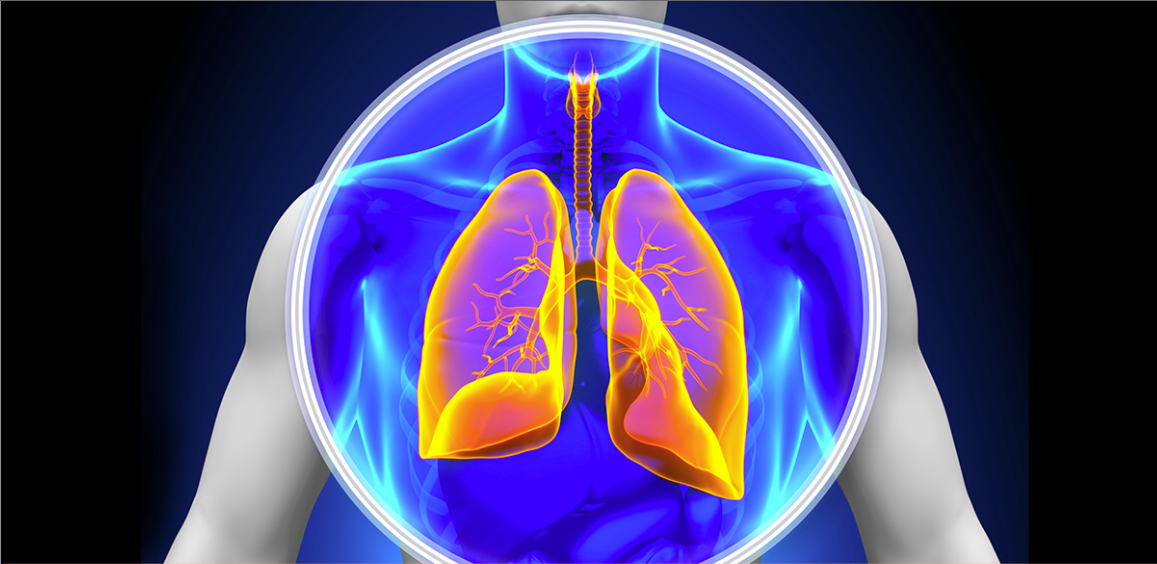Roswell Park’s Lung Cancer Screening Program for people at high risk for developing lung cancer includes a focused medical history, physical exam, and helical Low Dose CT (LDCT) chest scan. The LDCT is the only screening test proven to reduce lung cancer deaths.
The LDCT detects lung nodules—small, round growths of tissue—better than x-ray, and with less radiation exposure than a typical CT scan. Our pulmonologists are specially trained to look for specific characteristics of the nodules that indicate they may be cancer—their size, shape, density, and rough edges—and determine if diagnostic testing or biopsy is needed.
Because lung cancer typically develops from a lung nodule, any nodules must be carefully assessed and monitored for changes that indicate potential lung cancer—a plan of action called surveillance.
Does a lung nodule mean cancer?
No. Many people have lung nodules, and these may be caused by infections, scar tissue or conditions other than cancer. Of the high-risk people who are screened for lung cancer, we find lung nodules that are deemed suspicious in about 24% of them. Of those, slightly less than 4% are found to have lung cancer.
What if I need a biopsy?
Lung nodules that need further evaluation will require a biopsy (a sample of the nodule tissue) so that pathologists can analyze and accurately diagnose it. Roswell Park offers several minimally invasive options for biopsy of lung nodules, including bronchoscopy and endobronchial ultrasound.
For very small nodules and those located deep in the lungs, a new technology — robotic bronchoscopy — can reach and biopsy these nodules safer and less invasively and without surgery than ever before.
No lung nodules found?
Great! Your first LDCT scan will be used as a baseline scan—against which your future scans will be compared. Because you’re still at high risk for developing lung cancer, you should have annual LDCT for as long as determined appropriate by your clinical team. In the meantime, we can help you quit smoking for good and take other steps to improve your health and lower your risk for cancer.
What is involved with lung nodule surveillance?
Any lung nodules not found to be cancer at the time must be checked periodically with LDCT on a schedule determined by the nodules’ size and density (whether the nodules are determined to be solid, non-solid, or part-solid).
When do I need my 2nd screening test?
In general, small nodules indicate you should get LDCT screening every year for at least 2 years. Medium- and large-sized nodules should be screened again sooner, according to the nodule density. In addition, we will assess your nodules according to Fleischner Guidelines, which determines whether you’re considered a low risk or high risk patient. After your nodules are assessed, we will recommend your next screening test in 3, 6 or 12 months as appropriate.
After your 2nd screening test
We compare the results of your second LDCT test with your first (baseline) LDCT test to determine if there were any changes in your nodules and when to schedule your next screening test (in 3, 6 or 12 months as appropriate), or whether you should have PET/CT, biopsy or surgery. Any new nodules that appear will need to be evaluated and monitored, too.
Surveillance requires an experienced team
Following the National Comprehensive Cancer Network (NCCN) guidelines for lung nodule management surveillance can be a complicated endeavor. Our pulmonology team’s expertise in managing this surveillance is key to ensuring that lung cancer is detected early and treated effectively, while avoiding unnecessary invasive intervention.
